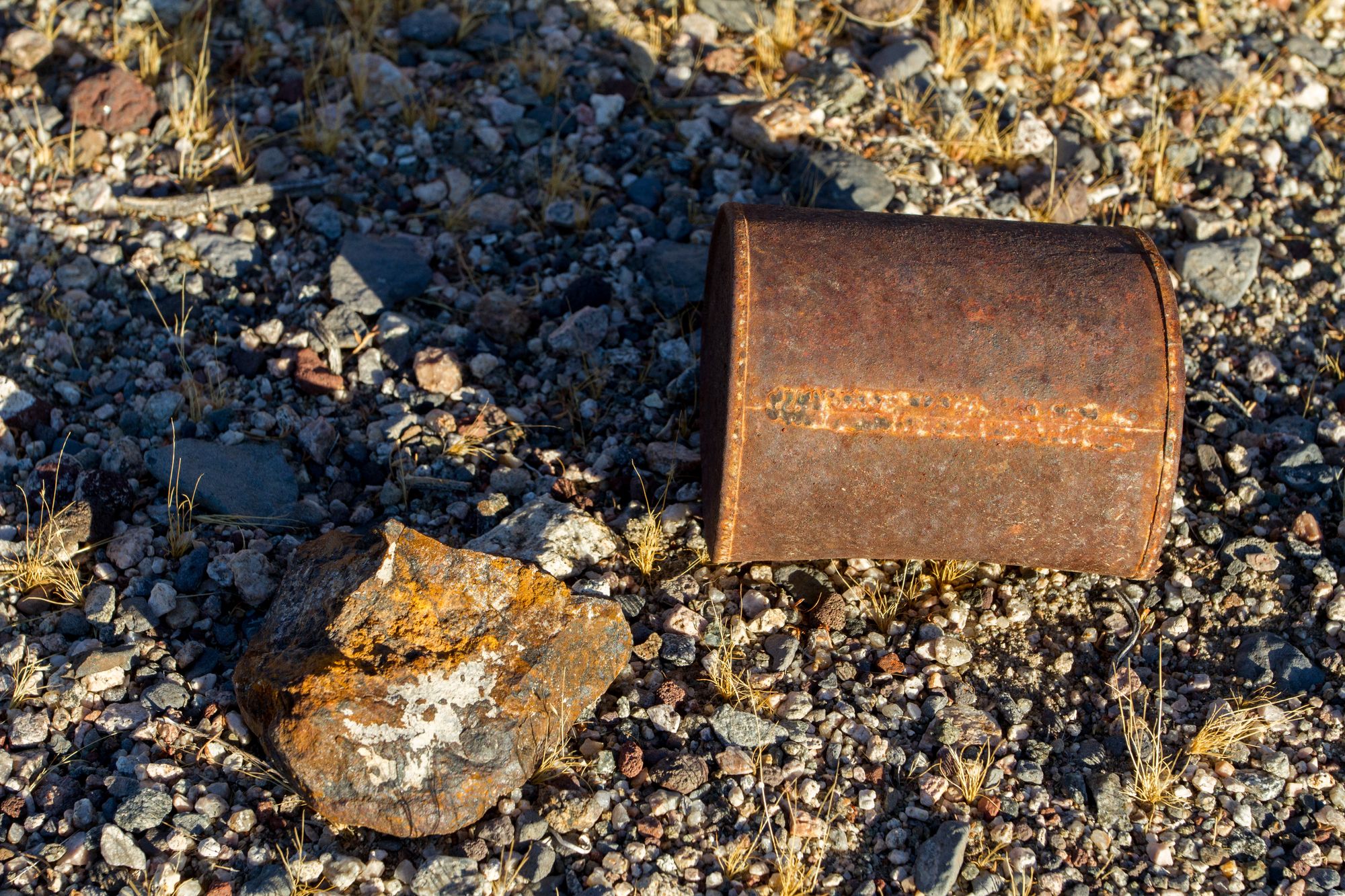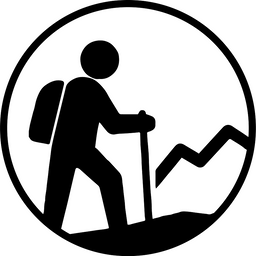In the summer of 2014, I was out in the Eastern Mojave exploring around (which is pretty normal for me). This time, however, I was looking for an old mining site with an arrastra. There aren’t too many arrastras left out in the wild, so finding one is always a treat, and I’ve made it a little side project to visit each one out in the Eastern Mojave that I could.
A brief adventure over rocky 4WD roads led me to the start of an easy hike down an unnamed sandy wash. It wasn’t long before I saw the ruins of a stone cabin ahead of me. Hardly anything remains of this little prospector’s cabin other than the hand-stacked stone walls. Across the wash was an arrastra.
So little remains of the arrastra that you could walk by and not even notice it. I’m guessing a gasoline engine once powered it. Surrounding the prospector’s camp are a few low walls. I couldn’t figure out what their purpose was other than possible decoration.


L: Arrastra. R: Ore and old can
What long-forgotten miner who once made his home here seems lost to time. Unfortunately, I haven’t turned up any history on this mining operation. A small prospect is nearby. I’m guessing by the few scattered artifacts that remain that the operation dates to the 1930s Depression era, but it is possible it is older.
Halloran Springs and its nearby petroglyphs are not far away.
See also:





